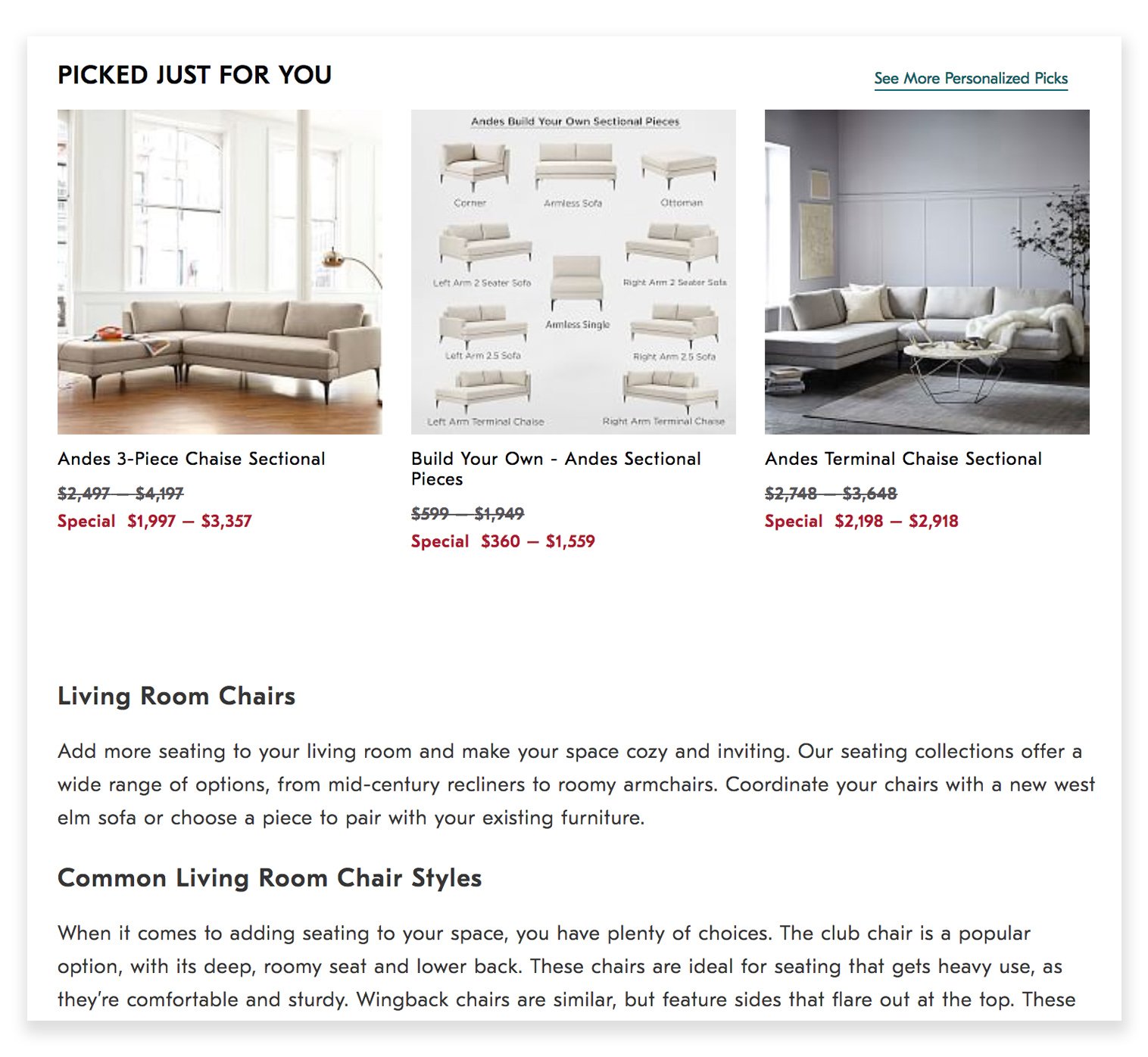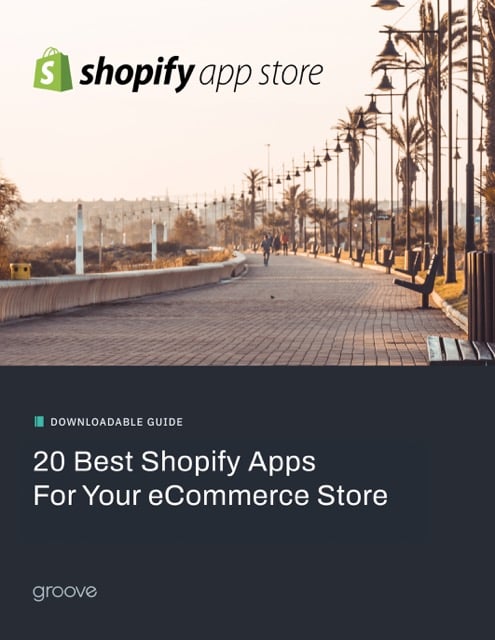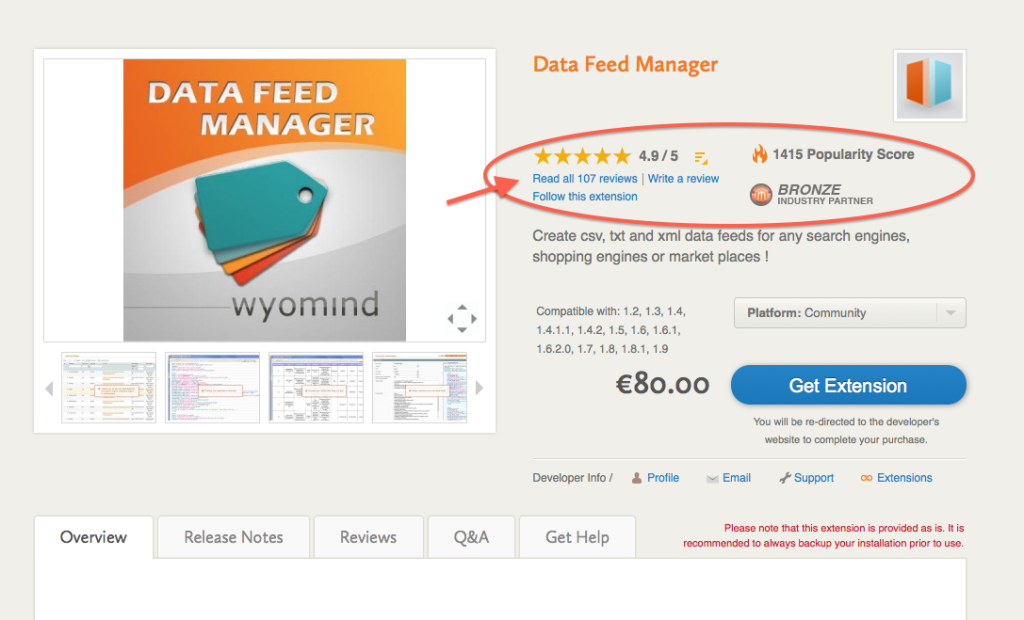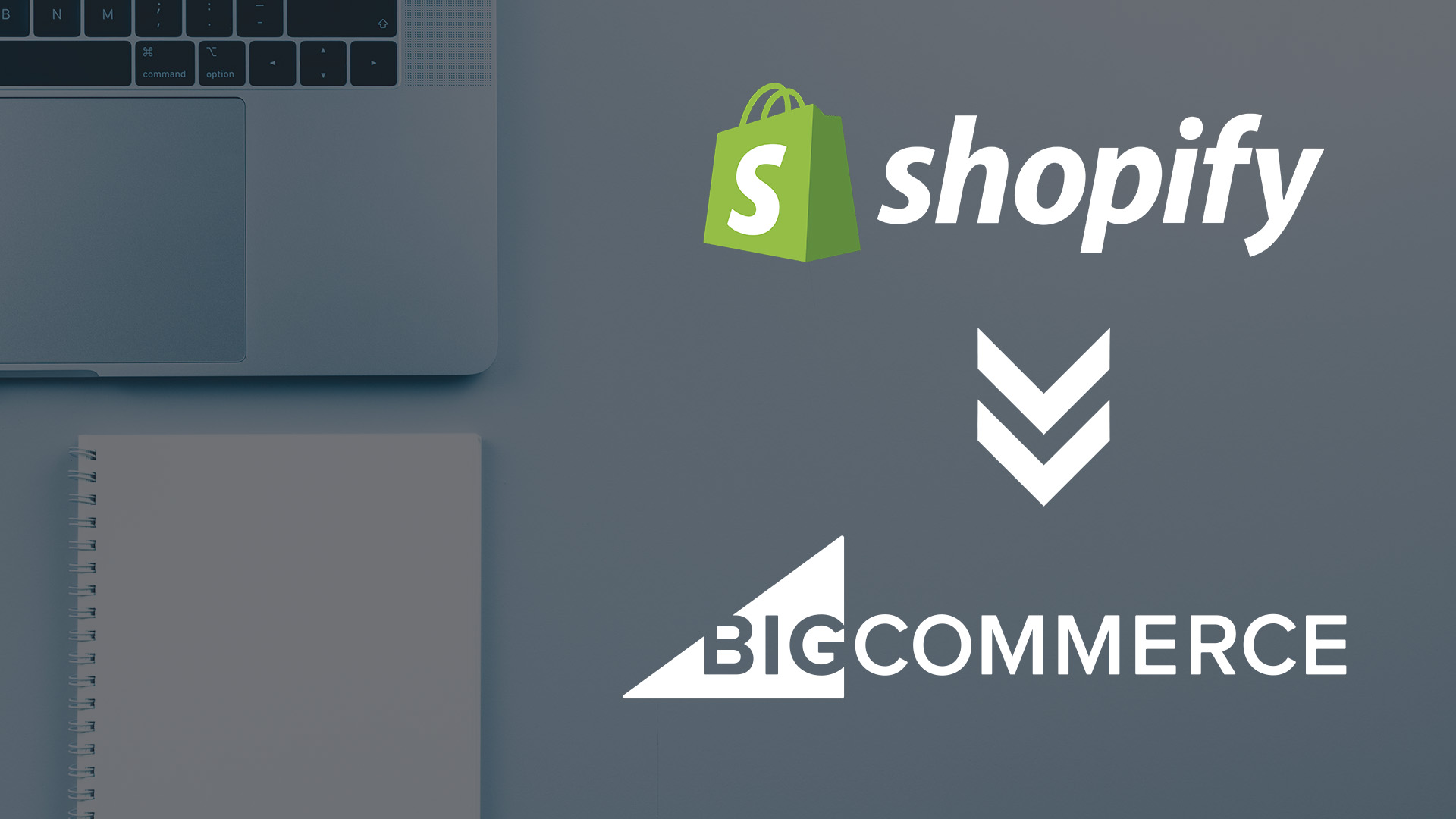What is eCommerce Copywriting?
eCommerce copywriting has come a long way since the “big idea” days of the Mad Men era. Today's copy still requires strategy and creativity, but for an eCommerce site it ultimately boils down to two key factors: brand consistency and SEO.
Both disciplines are equally important, but each requires unique tactics and skills to successfully implement. In this post, you’ll learn action items to improve your eCommerce copywriting, attract new website visitors and increase conversions.
Product Detail Pages
Before you begin writing product copy, you should clearly understand who you're writing for. To get started, define your ideal buyer personas and identify needs or pain points they are looking to solve.
Successful product descriptions directly answer questions and maintain a sense of personality. Remember that your voice and tone should align with your overall brand.
Consider how you might speak to a buyer in an in-person setting. Authenticity and personality on product detail pages can help retailers distinguish themselves from big-box online distributors.
In addition to adding personality, be sure to incorporate SEO best practices in your product detail pages. For example, we recommend including a target keyword on the following areas of your product detail page:
-
Page Title
-
H1
-
Image Name
-
Alt Text
-
URL
Be careful not to go overboard with keyword stuffing. Above all else, you should write your page for humans, not search engines. When you take this eCommerce copywriting approach, you’ll align with Google’s SEO recommendations and increase the likelihood of ranking.
FAQ Pages
FAQ pages present one of the greatest SEO opportunities for online retailers because they directly relate to search queries. When properly implemented, FAQ pages and sections can help increase organic website traffic and improve overall user experience.
We recommend starting the eCommerce copywriting process by listing out 5 to 10 questions that frequently show up in customer support inquiries. You can also include obvious questions you know your customers will look for, such as shipping and returns information.
Once you’ve identified the questions you want to answer, it’s time to format them appropriately. Use the checklist below get started:
-
Write your question with a clear heading tag. This will typically be an H2 tag if you create a separate FAQ page. However, tagging the question with an H3 or H4 will work as well.
-
Write your answer in 1 - 2 sentences. If you need more room, we recommend having the intro of your answer serve as a summary with a more detailed explanation that follows. This can help search engines pull your summary rich snippets into search results.
To increase the likelihood of rich snippets surfacing in organic search results, we also recommend incorporating question format schema data within your page. Once you customize the code below, you can place it at the top of your body section.
<script type="application/ld+json”>
{
"@context": "http://schema.org",
"@type":"QAPage",
"mainEntity":{
"@type": "Question",
"text": "Insert Question Name",
"dateCreated": "Insert Publish Date (example: 2019-3-14T20:07Z)",
"answerCount": 1,
"name": "Insert Company Name",
"author": "Insert Author Title",
"acceptedAnswer": {
"@type": "Answer",
"text": "Insert Question Answer.",
"dateCreated": "Insert Publish Date (example: 2019-3-14T20:07Z)",
"URL": "Insert Page URL",
"author": "Insert Author Name"
}
}
}
</script>
Category Pages
Category pages create eCommerce copywriting challenges because they rarely include areas for copy. However, we’ve found that incorporating select related content can improve page personality and search rankings.
In the example below, West Elm does a good job of incorporating additional text at the bottom of its category pages without going overboard. This paragraph includes high-value keywords to help the page show in search results.

About Pages
Although it may appear as a lesser priority, an About page offers a fantastic opportunity to highlight what makes your brand unique. People want to know why they should buy from you, and these pages provide a space for your brand to clearly say, “This is who we are.”
We recommend keeping these pages concise. However, brands should take the time to craft a well-constructed story that pulls users through their history and purpose for being in business. You can also include related content, like explainer or overview videos, to strengthen the user experience.
If you’re unsure where to start, try including a high-level overview of your company, your mission, vision, key differentiators and any awards, testimonials or press mentions.
Conclusion
Overall, properly executed eCommerce copywriting helps to capture a buyer’s attention and guide them through the purchase process. We hope you've found the tips above helpful and would love to hear from you! If you have any questions or comments, please reach out through the form below and we'll be in touch.
E-BOOK
20 Best Shopify Apps For Your eCommerce Store
Explore tags:
About the author
Subscribe to the Groove Newsletter
Get the latest updates and insights straight to your inbox



![32 AI eCommerce Tools To Start Using Today [2024]](https://www.groovecommerce.com/hubfs/2023%20Website/Blogs/AI%20Blog%20Social%20Media%20Tools/7%20AI%20Tools%20For%20eCommerce%20Merchants%20To%20Start%20Using%20Today%20-%20Promo%20Image%20Large.jpeg)




